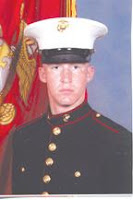 Jon Krakuer was the author discussed into this week’s assigned reading. Krakuer discovered one of his main subjects of writing and a lifelong obsession of mountaineering due to his father. The pair first attempted to climb a mountain when Krakuer was only eight years old. However, his father had also wanted his son to follow his career path as a doctor, but while interviewing at the schools on the east coast, a fellow applicant informed him of Hampshire College which was just in its second year of operation. It was an experimental school that led to Krakuer doing his senior thesis creating a new route on an Alaskan mountain.
Jon Krakuer was the author discussed into this week’s assigned reading. Krakuer discovered one of his main subjects of writing and a lifelong obsession of mountaineering due to his father. The pair first attempted to climb a mountain when Krakuer was only eight years old. However, his father had also wanted his son to follow his career path as a doctor, but while interviewing at the schools on the east coast, a fellow applicant informed him of Hampshire College which was just in its second year of operation. It was an experimental school that led to Krakuer doing his senior thesis creating a new route on an Alaskan mountain.Climbing mountains led to his writing career because he was soon asked by a magazine to write about his climbs which had never been explored before him. Soon, writing took over his life and he quit his job. Krakuer is mainly known for three pieces of work including Under the Banner of Heaven regarding the Mormon lifestyle, Into the Wild about a man whose body was found in the Alaskan wilderness, and Into Thin Air which discusses his own experience with a group climbing Mount Everest.
From the interview section with Krakuer, I really liked the way he described how to would approach his interview subjects. He said that he would approach a possible subject by sending them a letter or even a copy of one of his books. He hopes that his gives the impression that he is no threat and just a mountain climber or have been convinced to talk to him after reading one of the books. I think this is a very classy way of going about introducing himself than just calling and having them be put on the spot.
This week we were also assigned involved reading the introduction of the book. The part I really enjoyed about the introduction was when they described literary journalism more as a more of storytelling rather than strictly reporting events and typical events. Also how long each of these stories can take including some that involved more than a decade worth of research.
This week, I also read the interview with Susan Orlean, one of the few women authors from this book and who do this kind of writing. The part that most interested me about this author was the fact that two of literary journalism pieces have been made into movies. Blue Crush was the first film based on one of her articles about teenage surfer girls and Adaptation was the second movie that was based on her writing.
My Own Ideas:
My most recent idea for a literary journalism idea involved a concept called “Extreme Couponing”, which is also the title of a television show that features people who use coupons in such a way that there bills are very minimal in dollar amount. The last episode that I watched involved a lady whose bill was around $150 with no coupons, and by the end she had a 75 cent credit to the store. There are websites to help find coupons available for people to want to try this at home. However, the process does take a long to plan what exact items to buy and also planning a menu with those food items. Basically I would attempt to “Extreme Coupon” here in Bemidji but also include the fact that I am a college and primarily cook for one, sometimes two.
New York Time Examples:
The front page story in the Thursday, September 29th edition of the NYT was a great example of literary journalism. The article was titled “In a Quiet Village, Catching Up to a Hijacker,” the article begins telling the reader about the Captain of the plane and his thoughts the morning of the flight. The article continues on to tell the story of what happened and eventually how the hijacker was found. Another story of literary value which was in the same edition was in the Arts section and discussed a photographer and mountaineer who is now using his artwork to focus on global warming.
Photo Credits:
Into the Wild Book: http://litcirclescla.edublogs.org/files/2010/02/both-into-the-wild1.jpg
Blue Crush Movie: http://www.sweetslyrics.com/images/img_gal/22752_blue-crush-347848l.jpg
Extreme Coupon: http://dealseekingmom.com/files/2011/04/Extreme-Couponing.jpg






